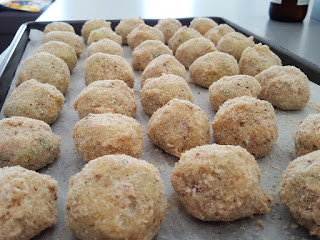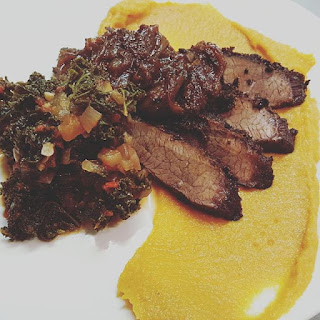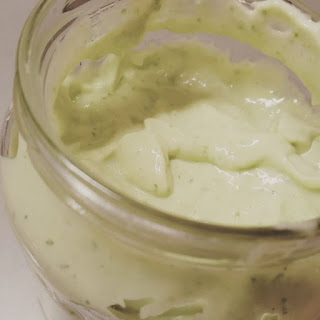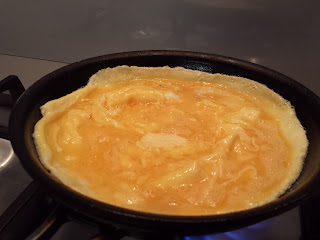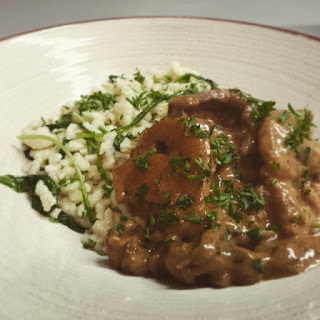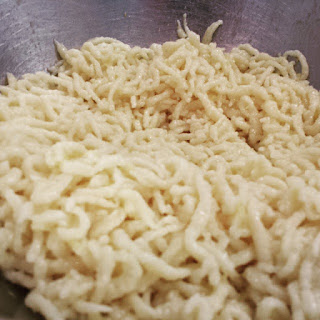
This is one of those get it all into the pot and let it see to itself for a couple of hours, fats and oils mingling together, textures softening, flavours intensifying. When you’ve finally had enough torture and can’t hack the mouth watering aromas filling the house, you just need to give a final adjustment to the seasoning, get it off the heat and devour, spaghetti is fine if you can’t be bothered with the gnocchi, but the fluffy pillows of potato really do lend themselves well to this sauce.
Sopressa puttanesca
Olive oil
Olives, stoned
Chilli flakes, to taste
Garlic, diced
Capers, rinsed
Sopressa, grated!
Capsicum, diced
Red onion, diced
Tomatoes, 1 can
Cider vinegar
- Get a generous glug of olive oil in a heavy pan over a medium heat, add a bit more, put in the grated sopressa and gently let it come up to temperature and release it’s oils.
- When it’s all sizzling away add in the garlic, onion and capsicum, cook until translucent.
- Splash in a little vinegar, and cook out.
- Add the chilli, capers, olives and tomatoes, cover and reduce the heat to low. Cook for a hour or two.
- Adjust the seasoning, salt, chilli, vinegar, and let cook out for a few more minutes before double checking.

Gnocchi
60g potato flakes (1 cup)
300 ml water
1 egg
4 g salt
- Mix well, transfer to ziplock bag and let rest for at least half an hour.
- Get a large pot of salted water on to boil.
- Nip of the corner of the bag and use scissors or a knife to cut of portions as you pipe into the water.
- Cook until floating on the surface and transfer to an ice bath.
Getting it all together
- When ready to serve, get a sauté pan on a medium heat with a glug of olive oil and a knob of butter.
- Sauté the gnocchi until beginning to crisp, ladle in some sauce and toss through, repeat until enough sauce is added.
- Serve in bowls with a generous grating of hard cheese.




